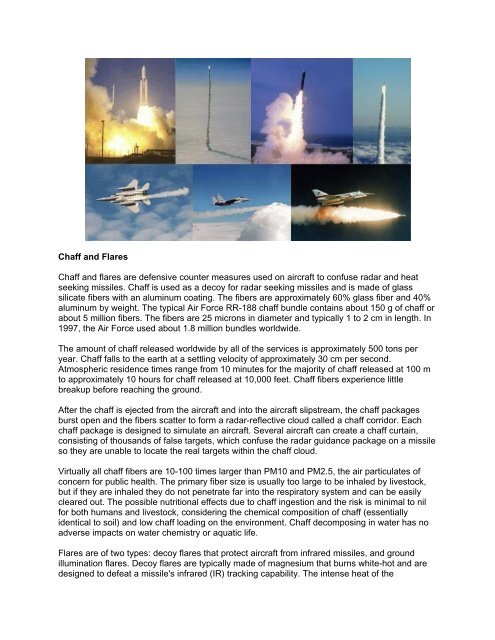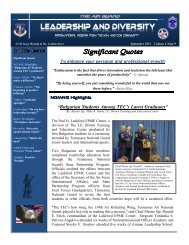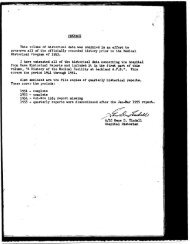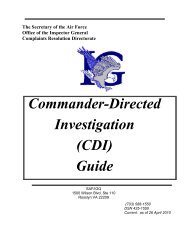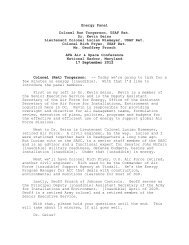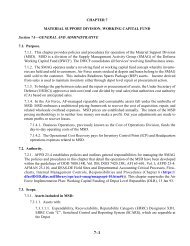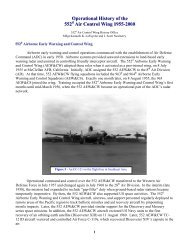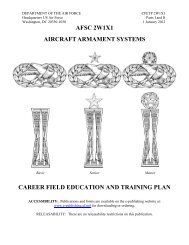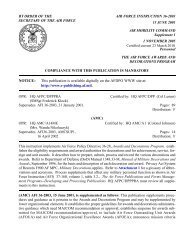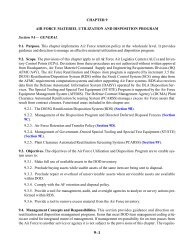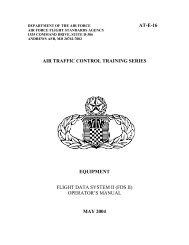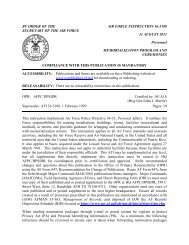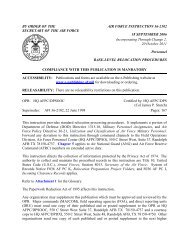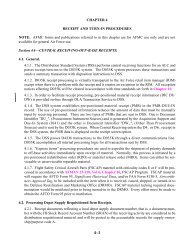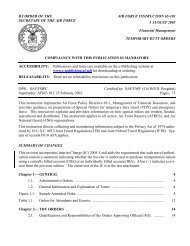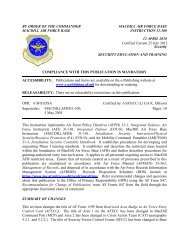CONTRAILS FACTS - Air Force Link
CONTRAILS FACTS - Air Force Link
CONTRAILS FACTS - Air Force Link
- TAGS
- contrails
- link
- www.af.mil
Create successful ePaper yourself
Turn your PDF publications into a flip-book with our unique Google optimized e-Paper software.
Chaff and Flares<br />
Chaff and flares are defensive counter measures used on aircraft to confuse radar and heat<br />
seeking missiles. Chaff is used as a decoy for radar seeking missiles and is made of glass<br />
silicate fibers with an aluminum coating. The fibers are approximately 60% glass fiber and 40%<br />
aluminum by weight. The typical <strong>Air</strong> <strong>Force</strong> RR-188 chaff bundle contains about 150 g of chaff or<br />
about 5 million fibers. The fibers are 25 microns in diameter and typically 1 to 2 cm in length. In<br />
1997, the <strong>Air</strong> <strong>Force</strong> used about 1.8 million bundles worldwide.<br />
The amount of chaff released worldwide by all of the services is approximately 500 tons per<br />
year. Chaff falls to the earth at a settling velocity of approximately 30 cm per second.<br />
Atmospheric residence times range from 10 minutes for the majority of chaff released at 100 m<br />
to approximately 10 hours for chaff released at 10,000 feet. Chaff fibers experience little<br />
breakup before reaching the ground.<br />
After the chaff is ejected from the aircraft and into the aircraft slipstream, the chaff packages<br />
burst open and the fibers scatter to form a radar-reflective cloud called a chaff corridor. Each<br />
chaff package is designed to simulate an aircraft. Several aircraft can create a chaff curtain,<br />
consisting of thousands of false targets, which confuse the radar guidance package on a missile<br />
so they are unable to locate the real targets within the chaff cloud.<br />
Virtually all chaff fibers are 10-100 times larger than PM10 and PM2.5, the air particulates of<br />
concern for public health. The primary fiber size is usually too large to be inhaled by livestock,<br />
but if they are inhaled they do not penetrate far into the respiratory system and can be easily<br />
cleared out. The possible nutritional effects due to chaff ingestion and the risk is minimal to nil<br />
for both humans and livestock, considering the chemical composition of chaff (essentially<br />
identical to soil) and low chaff loading on the environment. Chaff decomposing in water has no<br />
adverse impacts on water chemistry or aquatic life.<br />
Flares are of two types: decoy flares that protect aircraft from infrared missiles, and ground<br />
illumination flares. Decoy flares are typically made of magnesium that burns white-hot and are<br />
designed to defeat a missile's infrared (IR) tracking capability. The intense heat of the


